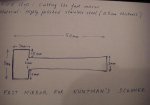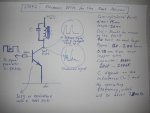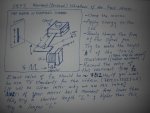- Joined
- Feb 15, 2010
- Messages
- 31
- Points
- 0
Thank you for your help, but I have no clue how to find the torque constant, as it is the opposite of a motor. In addition it is not supposed to make a full rotation but only few degrees, so it's impossible to have a true constant angular velocity 
For the laser feedback system I think I will use a photodiode array (maybe this one) with an Atmel or a PIC microcontroller.
Maybe I can try to build it and experimentally find with this feedback system a way to have something like a constant angular velocity (if the coil can produce a strong enough magnetic field it can overcome some non-linear factors and make the magnet have a constant angular velocity for a while). For example, if I take the angle vs time plot and I interpolate its function, I can find how the electromagnetic flux (and then the current into the electromagnet) has to behave in order to achieve a constant angular velocity.
It's a little tricky...
What do you think?
For the laser feedback system I think I will use a photodiode array (maybe this one) with an Atmel or a PIC microcontroller.
Maybe I can try to build it and experimentally find with this feedback system a way to have something like a constant angular velocity (if the coil can produce a strong enough magnetic field it can overcome some non-linear factors and make the magnet have a constant angular velocity for a while). For example, if I take the angle vs time plot and I interpolate its function, I can find how the electromagnetic flux (and then the current into the electromagnet) has to behave in order to achieve a constant angular velocity.
It's a little tricky...
What do you think?







